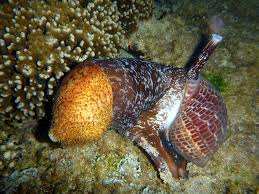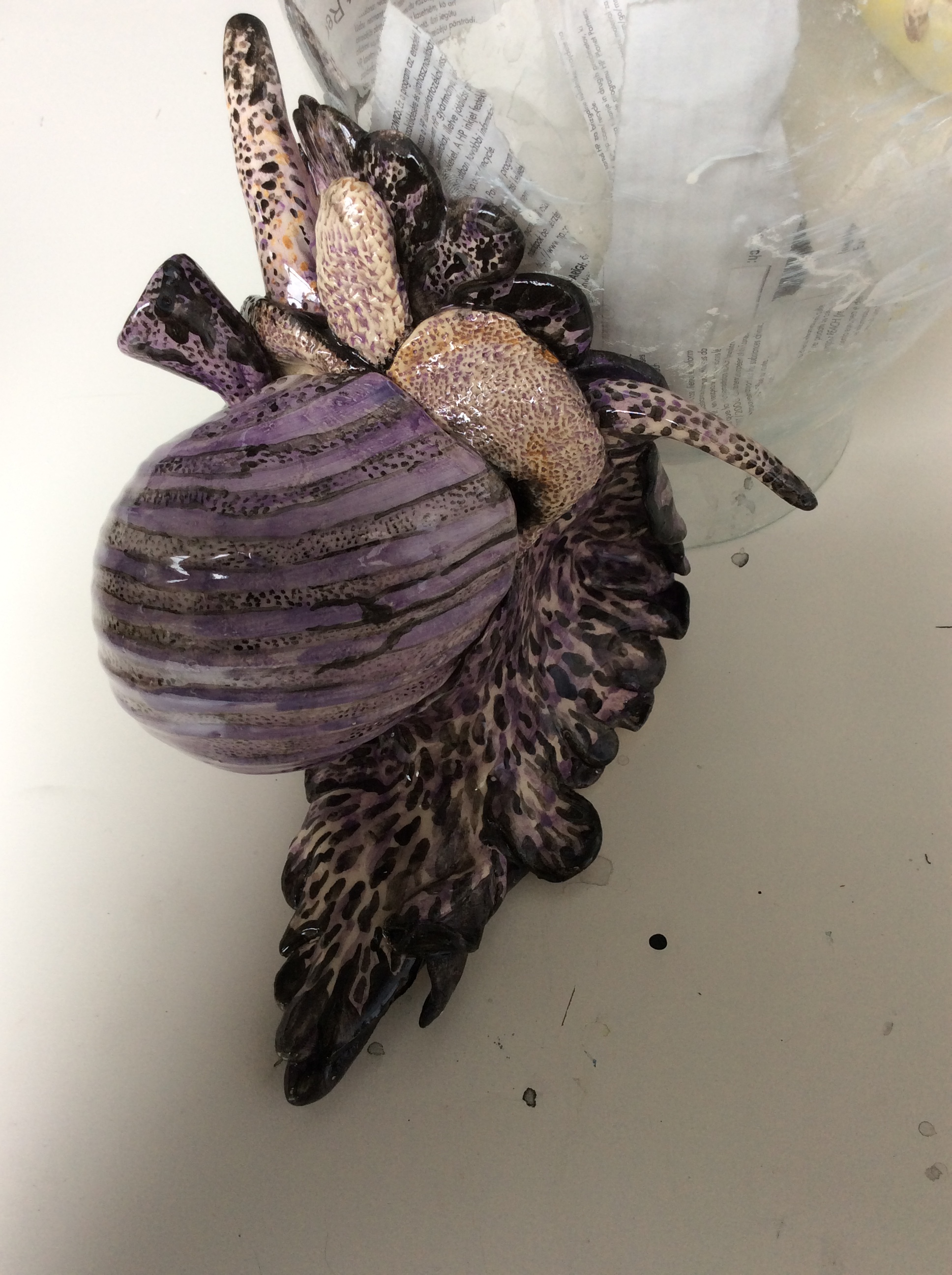
If you’ve persisted this far, you may remember that I have an unfortunate addiction to The Archers on Radio 4. I’ve got all the podcasts going back to 2008 and I listen to (and shout at them) when I’m working. The programme has frequently provided inspiration dealing as it does with methods of farm and food production; sustainable and unsustainable.
A phrase has been playing around in my interior monologue.
Jack and Peggy Woolley ( a genuinely unlikeable couple who bobbed up far too often as far as I was concerned) used to share a joke about Duck Bigarade. One evening, when she told him they were having Duck Bigarade for dinner, he said ‘Dirk Bogarde’? Peggy has never known if he genuinely misheard, was making a joke, or really thought that’s what it was called. Ever since then, when they had duck, or he saw duck on the menu, he’d say ‘Dirk Bogarde tonight’. I think we were meant to think this was adorable, but personally, I found it gut wrenchingly obvious and unfunny.
Anyway, Duck Bigarade has been bothering me. So much so that I woke up from a dream of duck bothering oranges and knew I had to make a sculpture about it. And that despite the fact the only time I tried duck I found it vilely greasy and I don’t like meat combined with fruit at any time (well I don’t really like meat at all to be honest).
This is a painting called “The White Duck” by Jean Baptiste Oudry. Now I thought it worthy of inclusion because it was the original cover of “French Provincial Cookery” by Elizabeth David, and she has much to say about duck in that quintessential food bible of the !970’s. I want to add more about Miss David, and I will in a later post. There is also a fascinating mystery about the painting and I will deal with that elsewhere too.
Talking of the 70’s, I should mention that I was thinking of those ornamental centrepieces that were very popular then. There was a shop called Casa Pupo that was particularly dear to my heart, I couldn’t afford any of their stuff but I could dream. This is a typical piece.

I wanted to replicate the ducks so I found a suitable piece to take a cast from.

Once I had made the mould it was easy to produce many ducks (and oranges).

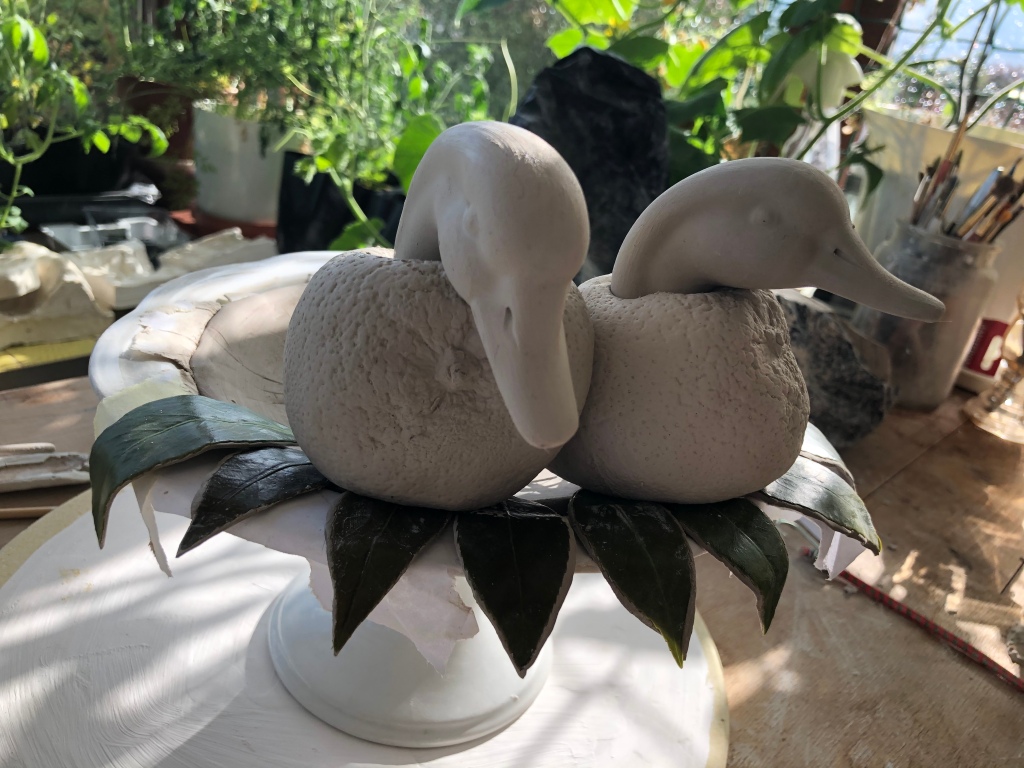
I arranged them on a ceramic tazza that I found in Tayside Recycling centre. I had a lot of help in the studio from certain furry friends.

I made a central orange with extra beaks.
I was actually quite pleased with how this piece turned out (which is frequently NOT the case) and I’m now planning a series of tazza/ ornamental food pieces.
If they are even half as good as Mrs Beeton’s I shall be well pleased!










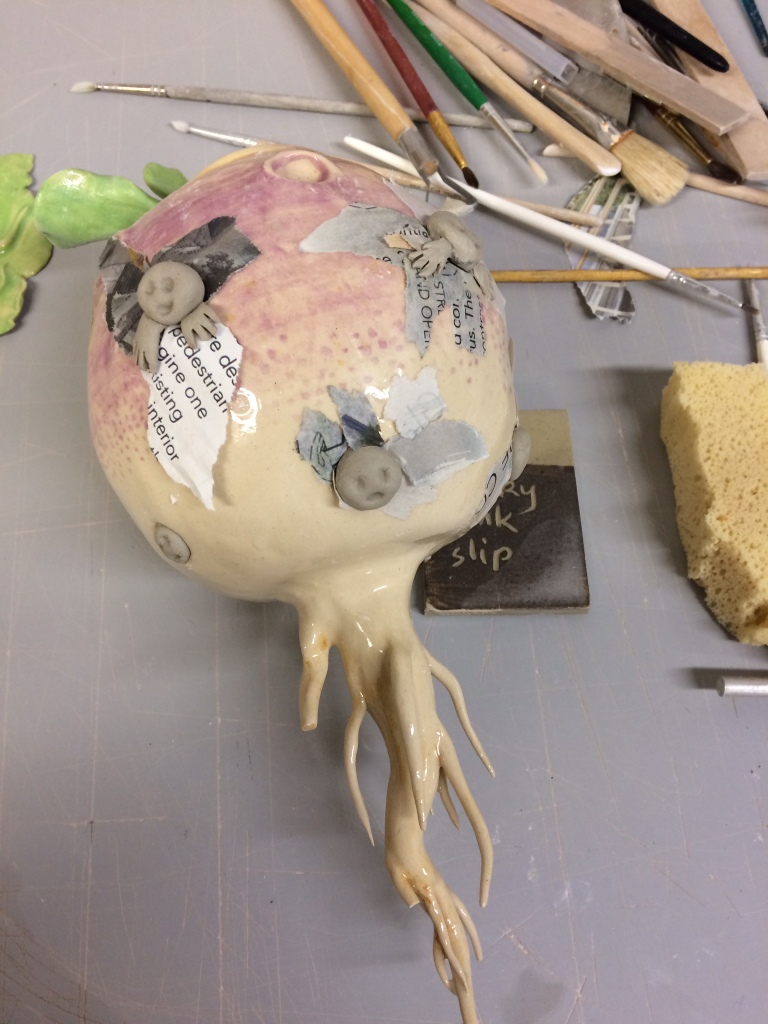


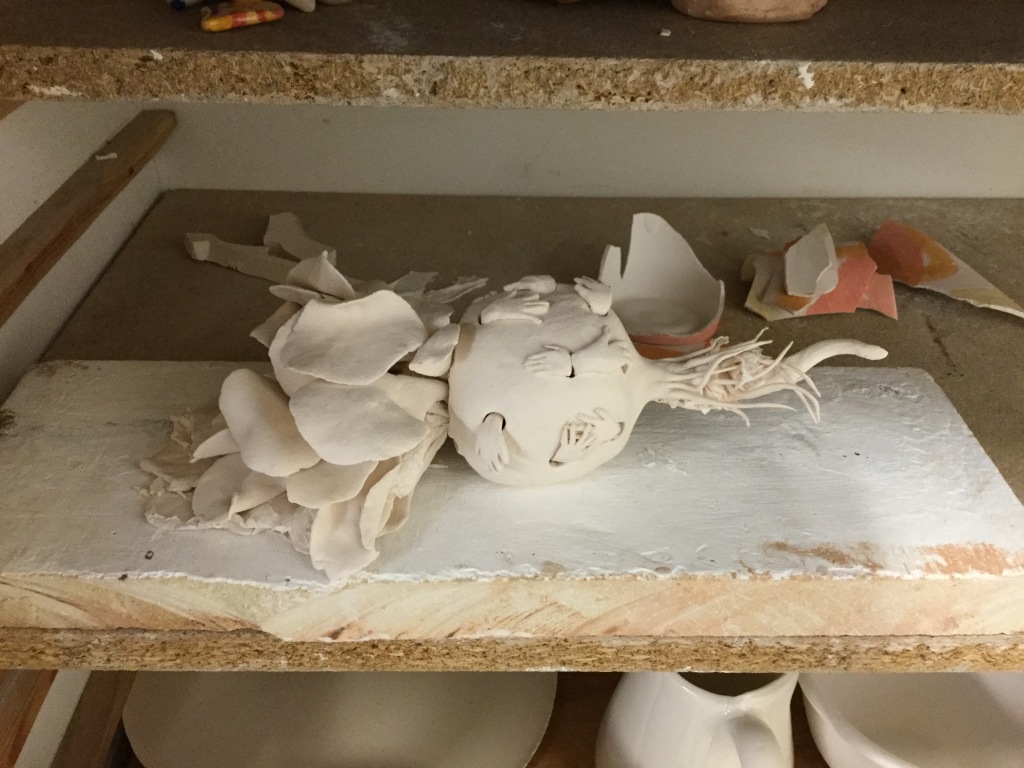

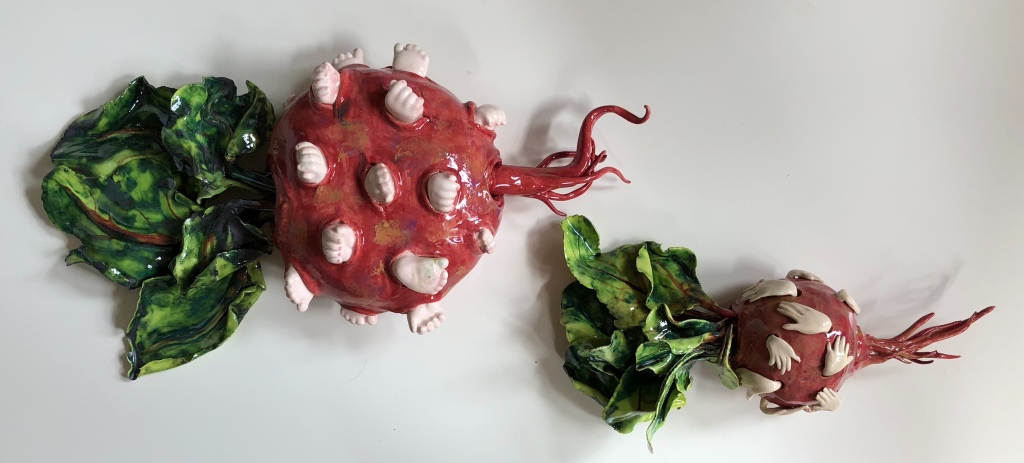
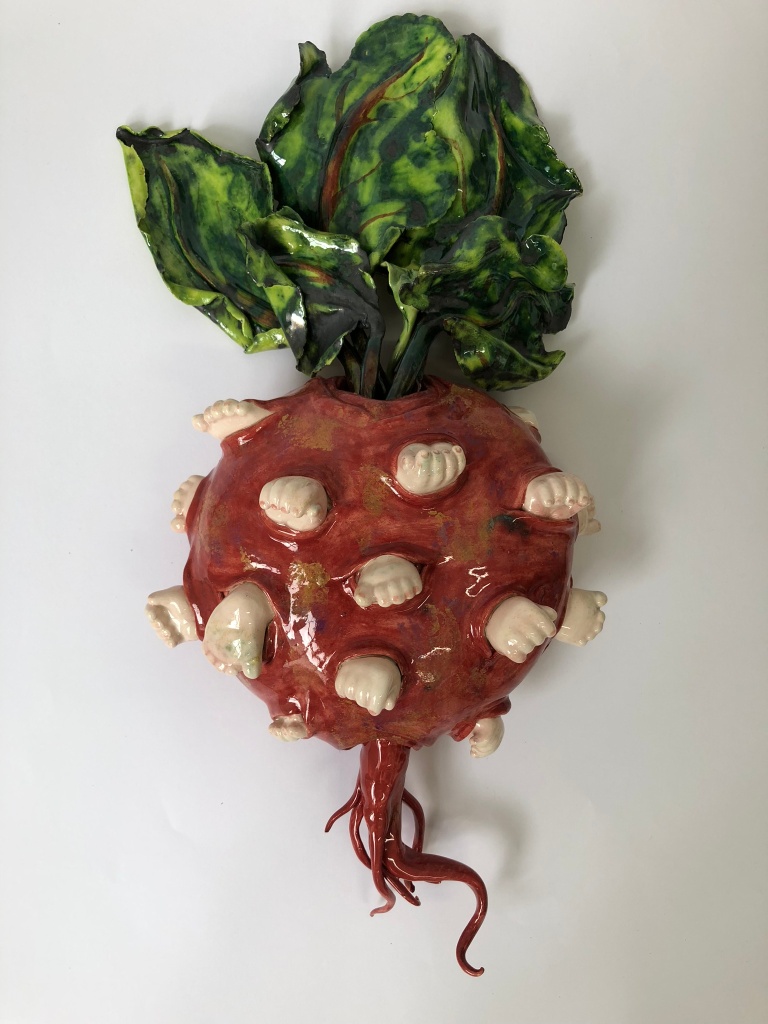
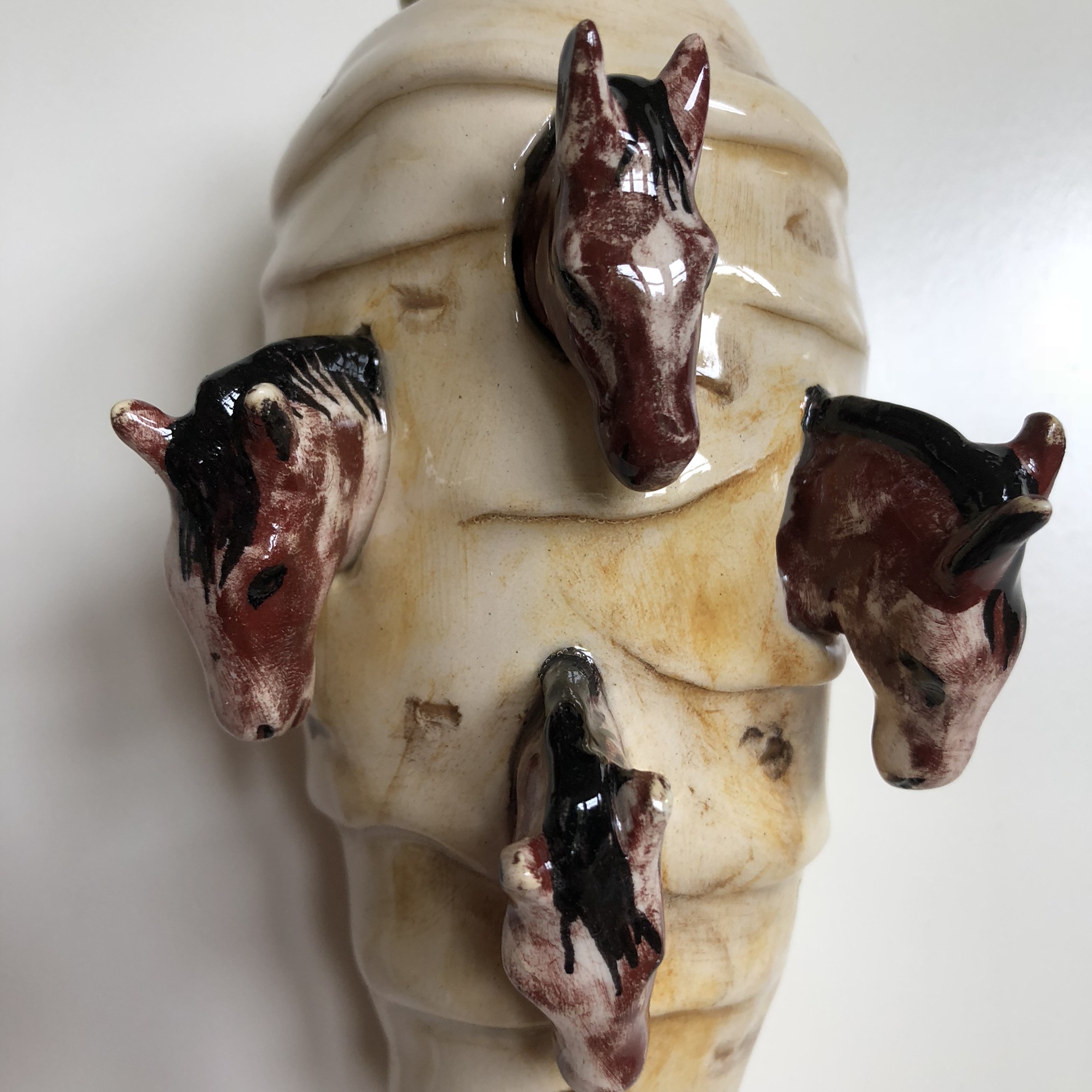

























 I used the horse head in a couple of other pieces which I don’t consider to be very successful.
I used the horse head in a couple of other pieces which I don’t consider to be very successful.



















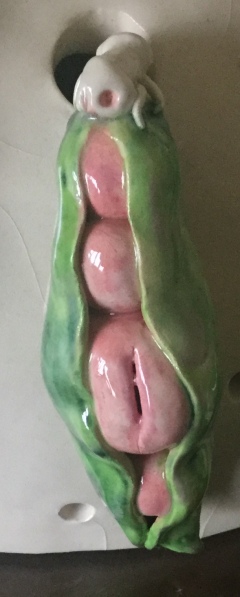

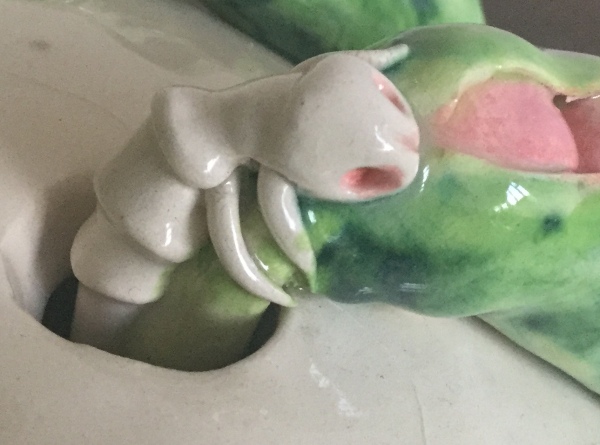

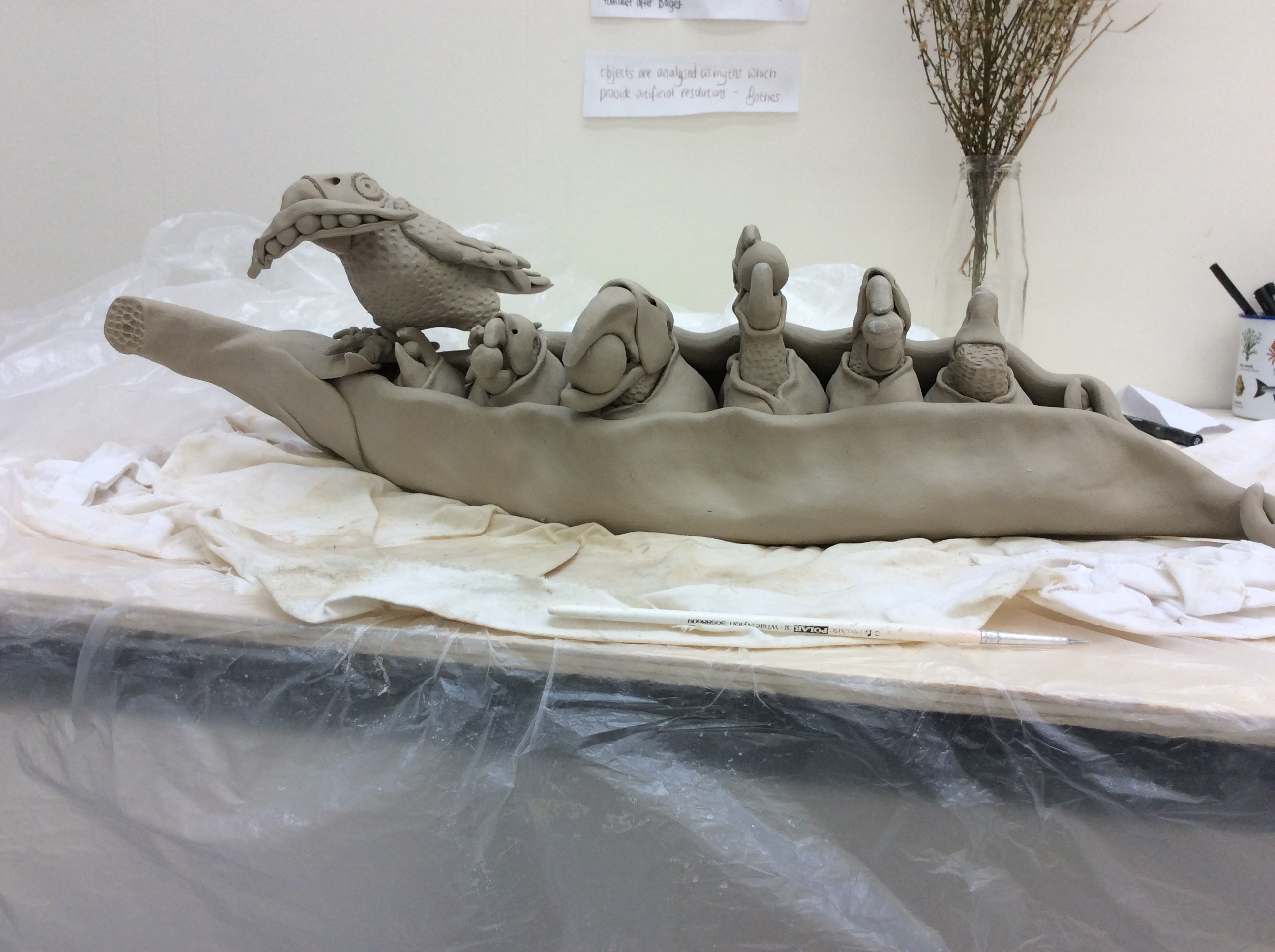

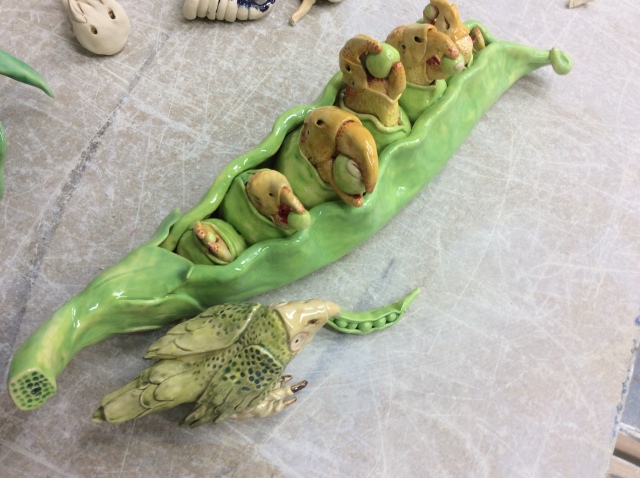







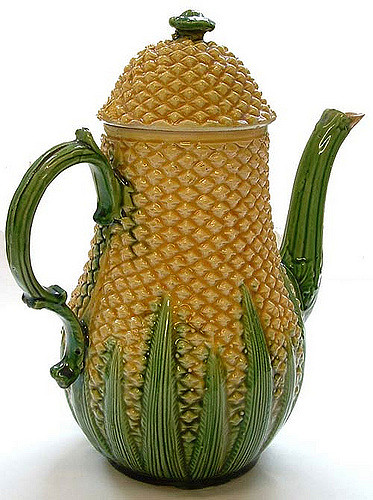
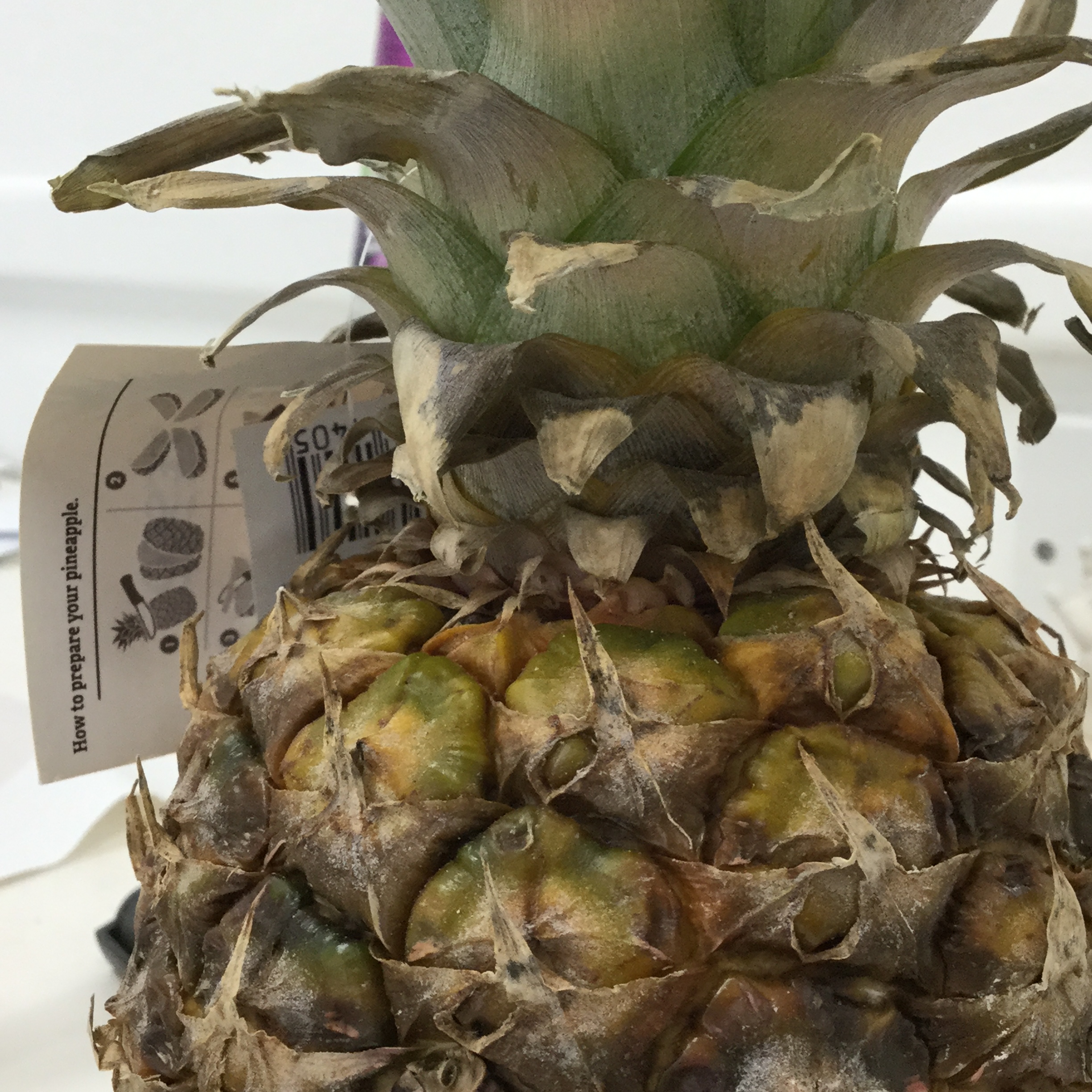





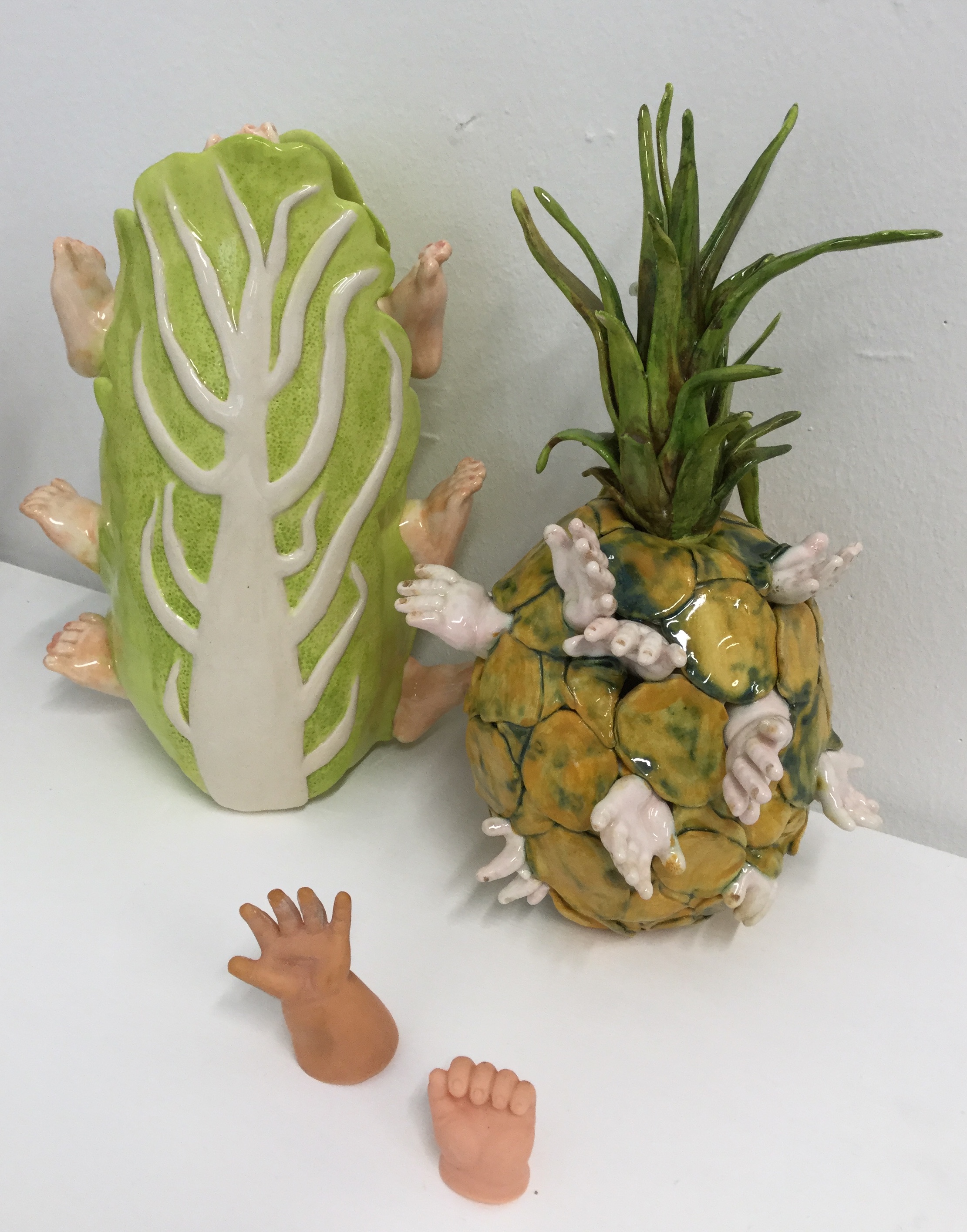




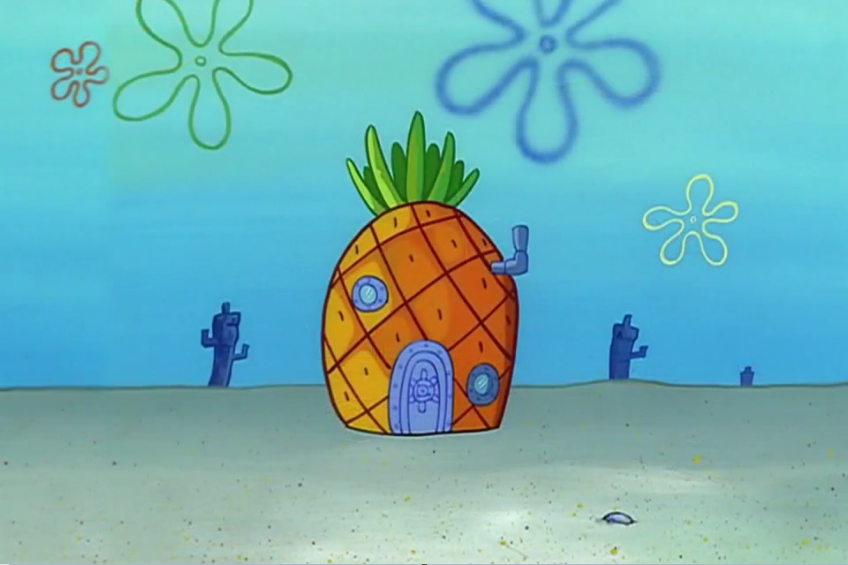

 Cauliflowers have proved a very fruitful design source for ceramics; the delicious texture of their creamy, curdy centre that contrasts so well with the emerald leaves has been an absolute gift to anyone who works with white earthenware and copper oxide. Who am to say otherwise?
Cauliflowers have proved a very fruitful design source for ceramics; the delicious texture of their creamy, curdy centre that contrasts so well with the emerald leaves has been an absolute gift to anyone who works with white earthenware and copper oxide. Who am to say otherwise?

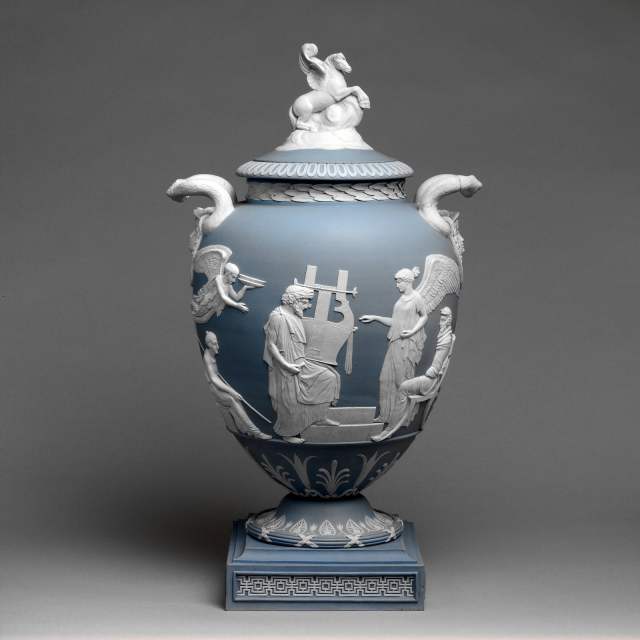










 For some months I’ve been playing about with the idea of the Vegetable Tortures. I would like to be able to say that this was a project wholly motivated by the noble desire to examine the ethics of genetically modified food and sustainable farming methods. And, indeed, in part it was.
For some months I’ve been playing about with the idea of the Vegetable Tortures. I would like to be able to say that this was a project wholly motivated by the noble desire to examine the ethics of genetically modified food and sustainable farming methods. And, indeed, in part it was.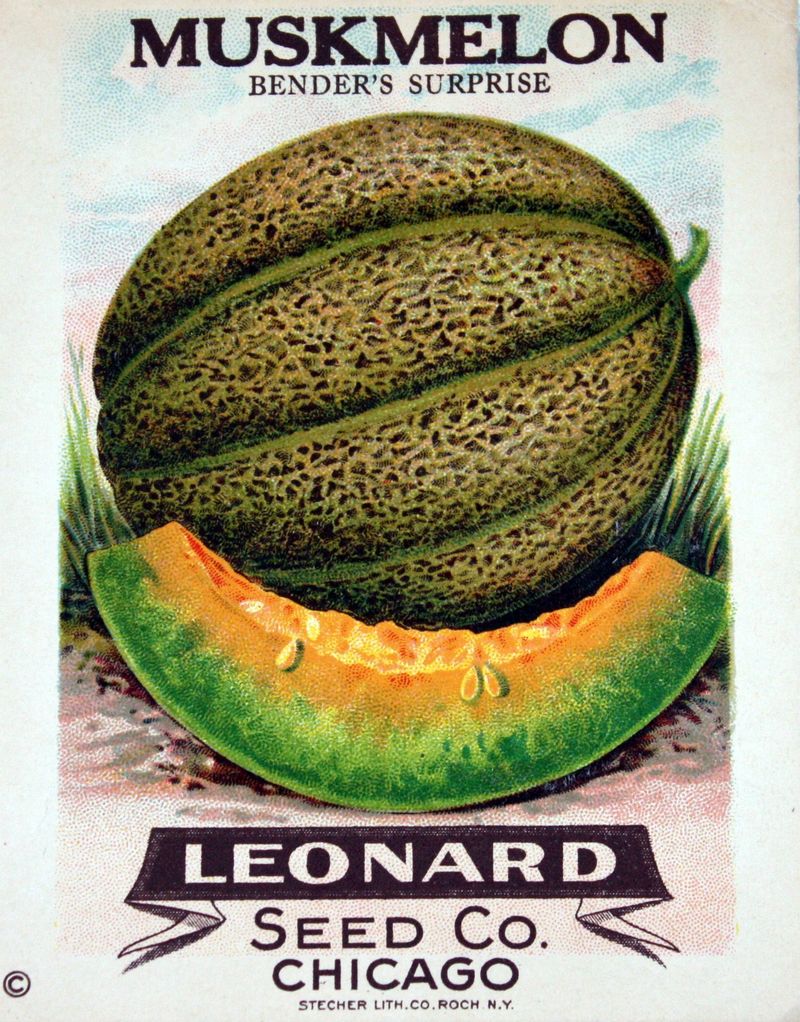

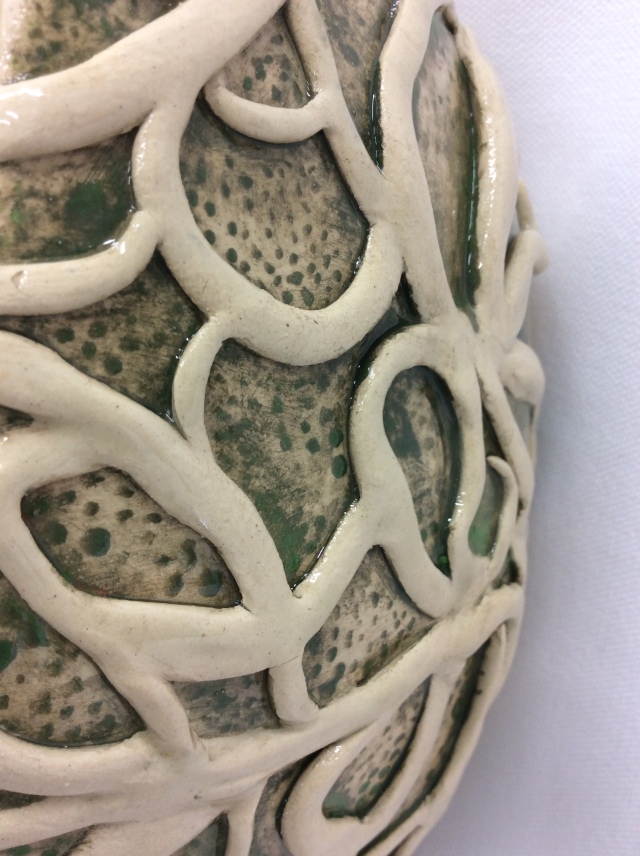





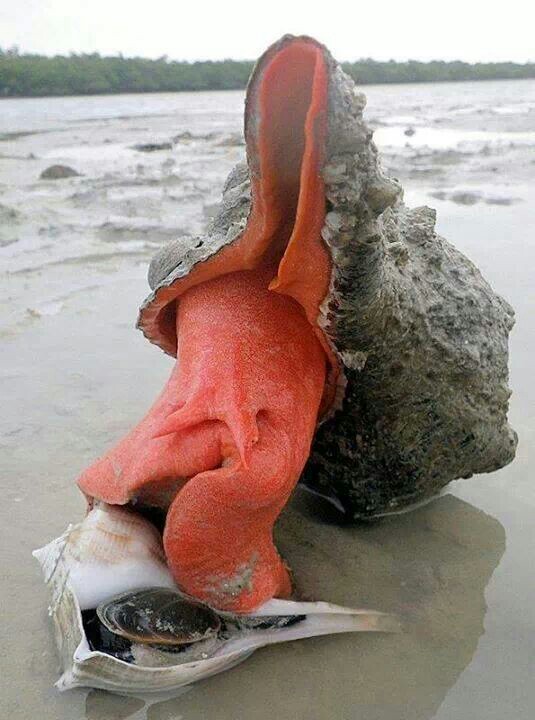

 Purple pigment was incredibly expensive; snails had to be harvested from the sea, and each yielded only a drop or two of liquid. Thousands of snails were sacrificed to make the royal purple . Owning a cloth handwoven and colored with this natural dye was a symbol of high status — the power and wealth of royalty and the church.
Purple pigment was incredibly expensive; snails had to be harvested from the sea, and each yielded only a drop or two of liquid. Thousands of snails were sacrificed to make the royal purple . Owning a cloth handwoven and colored with this natural dye was a symbol of high status — the power and wealth of royalty and the church.

